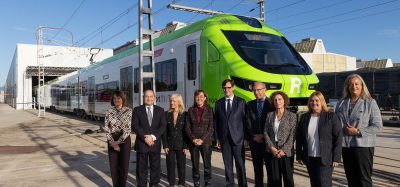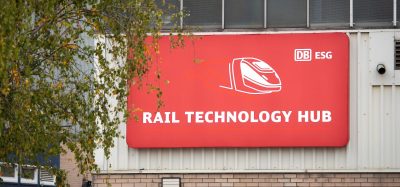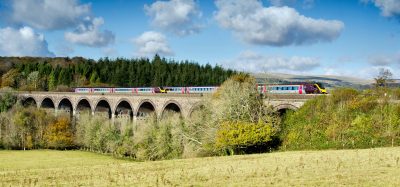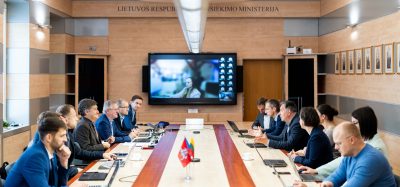The strength of positive social media for passengers during COVID-19
Posted: 19 November 2020 | Isana Derici | No comments yet
Isana Derici, Social Media Interface Manager at Govia Thameslink Railway (GTR), provides a look into how social media is used to improve the customer experience for the UK’s biggest rail operator.
As the social media team at the UK’s biggest rail operator, Govia Thameslink Railway (GTR), we’re one of the main faces of the business responsible for communicating directly with customers. It’s a unique and fast-paced world, one where we’re kept on our toes by the reactive nature of the industry.
In 2019, there were over 340 million passenger journeys made across our four brands: Thameslink, Southern, Great Northern and Gatwick Express. On top of these 340 million journeys, we have our wider community of stakeholders, businesses and partners that we regularly interact with, forming part of the wider GTR community. This is a significant amount of people relying on us for timely updates, with key information quickly relayed by the company’s social media team, operating from GTR’s Control Centre.
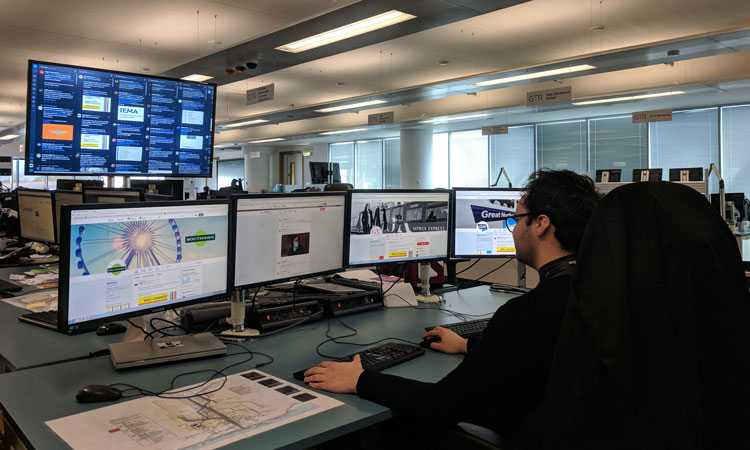

GTR’s social media team is one of the main faces of the business responsible for communicating directly with customers
We’ve recently restructured the wider social media team to support two critical business functions – real-time information and customer care – with two dedicated teams. Real-time information falls under the Control Centre and customer care falls under myself as part of Customer Relations, while my colleague – Tina Owusu, our Senior Comms and Customer Experience Manager – oversees the real-time information side; we started off together in the social media team when GTR was created, so have been on quite the journey together!
In 2019, there were over 340 million passenger journeys made across our four brands: Thameslink, Southern, Great Northern and Gatwick Express.
My role entails ‘interfacing’ between these two new functions and, through the wider business, to deliver a best-in-class social media service that satisfies both business and customer needs. Our Chief Operating Officer, Steve White, is a big fan of social media and a frequent poster; without his support and belief in the importance of the team, we would not have the dedicated social media operation that we have now.
Having a reliable, responsive and attentive social presence is critical for any business with a customer base as wide as ours; social media is only going to keep growing as an important communication tool. While passenger numbers are currently significantly lower due to the pandemic, as part of GTR’s ongoing focus on real-time information and customer care, our regular and real-time updates ensure that we are supporting our customers and relaying all vital information that may affect their journey or experience whilst using one of our services, as quickly as we can. This is no mean feat when operating some services 24/7, or during the COVID-19 pandemic, but the new structure ensures that we are in the best possible place to do that both proactively and reactively.
Having a reliable, responsive and attentive social presence is critical for any business with a customer base as wide as ours; social media is only going to keep growing as an important communication tool.
Our commitment to acting as a community-focused business ensures that we are not just sharing information, but also being approachable and human. This means not having impersonal, robotic chatbots fielding enquiries, but actually having people speak with people, being personable and forming relationships. Our team is always on the lookout for ongoing trends to help start positive customer conversations and boost engagement as much as we can; we want to be as approachable and friendly as possible. There’s also a big focus on bringing the spirit of the railway family onto social media; it’s camaraderie that you rarely see in any other industry and has been embraced further during the pandemic.
To follow is my insight into the two critical functions of the wider social media team, customer care and relaying information effectively, as well as how the outbreak of COVID-19 impacted our work and how we talk to our customers.
Customer care
One less obvious, but crucial, aspect of customer care for the social media team to support is station improvement updates. We use social media to keep our stakeholders and customers up to date with the improvement works that we’re planning and putting into action.
Our commitment to acting as a community-focused business ensures that we are not just sharing information, but also being approachable and human.
It could be the case that a customer has written to us and suggested that something at their local station – perhaps a bike rack, bench or toilet – needs some form of improvement. When this happens, we pass the information on to the project teams, though it is often the case that we’re already aware of the need for improvements and works have been planned. We can then let that customer and the wider community know that action is being taken. This type of communication has become especially important throughout the pandemic, reassuring customers that we are making the required changes to keep colleagues and customers safe. It’s also become extremely important to show the changes that we’re making on social media to provide a form of visual reassurance that we are making positive improvements.
We’re now living in a speed-focused culture, where quick responses to customer queries is an undeniable expectation, and one we are focused on meeting. Even though Gatwick Express services have been suspended during the pandemic due to lower passenger numbers, our Facebook Messenger chat option remained open to answer questions and we have maintained an average response time of less than five minutes. It’s an important tool to help build customer loyalty and a positive brand perception, making the commitment to customers that you are there to support them, whenever required.
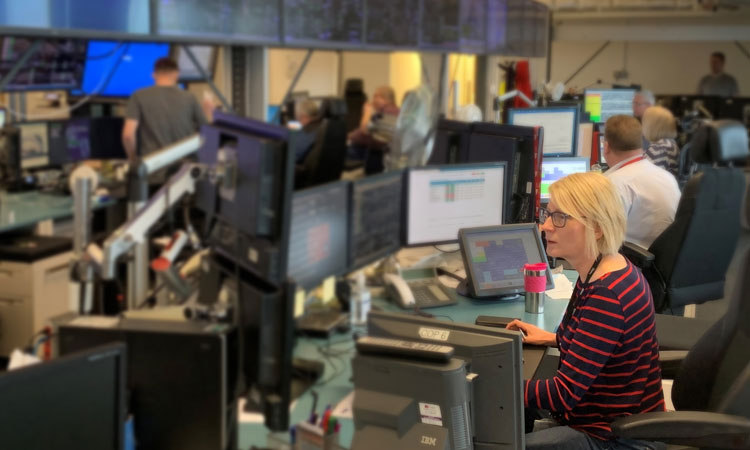

GTR recently restructured the wider social media team to support two critical business functions – real-time information and customer care – with two dedicated teams.
Relaying information
Relaying information can go in one of two directions, either internally to the company’s decision makers or externally to our customers and wider community stakeholders.
We’re now living in a speed-focused culture, where quick responses to customer queries is an undeniable expectation, and one we are focused on meeting.
For internal communication, the social media team serves as a real-time pulse check for the rest of the company, ensuring relevant teams are updated on events as they happen. This could be tracking new customer needs, trending topics or doing a daily review of passenger and community sentiment; our work and the information that we provide is used to inform the decisions that the company makes that impact our staff and/or customers, and has become even more important during the pandemic. We always make sure to highlight the positives and we’ve seen an increase in positive sentiment during the pandemic, with lots of great praise for our people working on the front-line.
With our externally focused communications, customer care and passenger experience is at the forefront. For the most part, what we communicate with our external stakeholders will have a direct impact on a select group’s experience whilst using one of our services. Whether that be providing live updates on timings or reporting station improvements, the end result will be that we have kept our community informed and satisfied with the service we’re providing.
Customer communication throughout COVID-19
Throughout the pandemic, our number one priority has been to ensure that we’re a constant public presence for GTR and are on hand to support and reassure customers that, if they have to travel, they can travel with confidence, and that the company has, and continues to take, the best and most necessary precautions to ensure the safety of colleagues and customers.
The age of COVID-19 also increased the importance and value to our customers of quick and friendly responses to any queries or concerns. Whilst this should always be the main function of a social media team, the pandemic meant that we needed to be more agile and fluid than usual. New issues for the team to deal with, like hand sanitiser stations running low, have become a real priority – we can play a role in reassuring a passenger that, by the time they come to use that service and sanitiser station again, it’ll be restocked and ready for use.
Throughout the pandemic, our number one priority has been to ensure that we’re a constant public presence for GTR and are on hand to support and reassure customers…
However, COVID-19 has also created numerous issues for social media teams to deal with, beyond the provision of suitable health and safety measures. We’ve had to start refunding tickets online and troubleshooting new customer issues that sometimes come with process changes. When we first entered lockdown, we made sure to have a team catch-up entitled the ‘Social Social’ (get it?!) every day so that we were keeping in touch on all things work-related, but that we were having a good healthy chinwag too and checking in on each other. It’s been a challenging few months for everyone, but we’re really pleased that, despite the uncertainty, stakeholder sentiment toward GTR has remained positive throughout.
In summary
As the world becomes increasingly digitalised and interconnected, the value of a dedicated social media department to any company is going from strength to strength. It is simply not possible, without an on-hand social media team, for businesses to meet the needs of its consumers, especially if providing a broad service on a 24/7 basis, like ours at GTR.
With instant responses and a personal approach to real-time customer care now an expectation, social media has become integral to a business’ success in building relationships with stakeholders and ensuring positive public perception of the brand.


Stay Connected with Global Railway Review — Subscribe for Free!
Get exclusive access to the latest rail industry insights from Global Railway Review — all tailored to your interests.
✅ Expert-Led Webinars – Gain insights from global industry leaders
✅ Weekly News & Reports – Rail project updates, thought leadership, and exclusive interviews
✅ Partner Innovations – Discover cutting-edge rail technologies
✅ Print/Digital Magazine – Enjoy two in-depth issues per year, packed with expert content
Choose the updates that matter most to you. Sign up now to stay informed, inspired, and connected — all for free!
Thank you for being part of our community. Let’s keep shaping the future of rail together!
Related topics
Apps, Big Data, Digitalisation, Passenger Experience/Satisfaction, Passenger Information Systems (PIS), Real-Time Passenger Information (RTPI), Technology & Software, The Workforce



